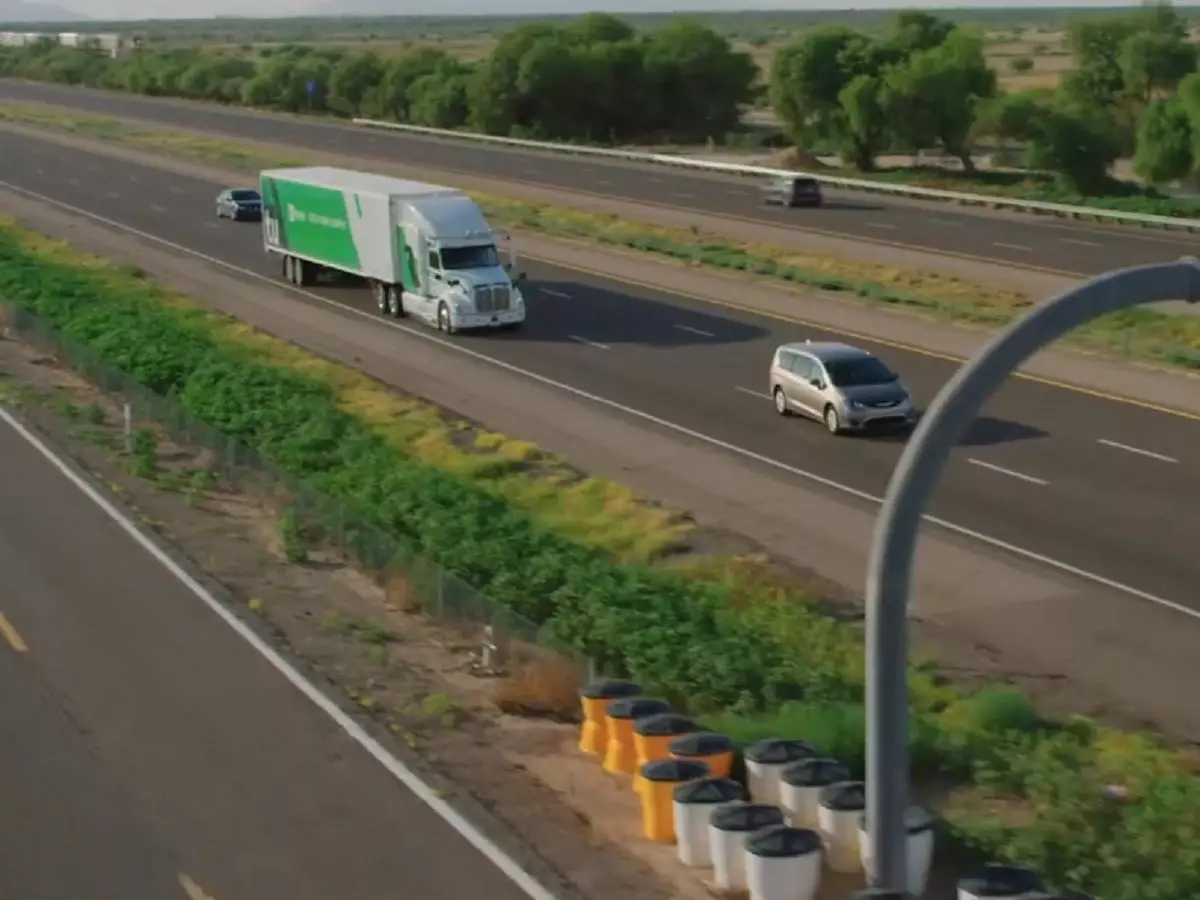Self Driving Trucks Can Now See As Far As One Kilometre Ahead Thanks To A New Camera System
TuSimple a US based startup claims that the new camera system developed by it can function at night as well as other such poor lighting conditions. The firm did not feel the need to go for Lidars or radars for the purpose having a firm belief that only cameras can provide the long distance vision necessary for trucks. The system therefore only uses a bunch of cameras to garner the extra field of vision needed in the case of trucks.

A major restriction for self-driving vehicles comes at the night time as the capability of cameras appointed to detect the elements on the road starts diminishing. While there are several solutions being tested out for this, including Lidars and radars, none of them have proven to be 100% effective in such scenarios. A new camera system developed by an autonomous trucking startup might change that soon.
TuSimple, a US based startup, claims that the new camera system developed by it can function at night as well as other such poor lighting conditions. The firm did not feel the need to go for Lidars or radars for the purpose, having a firm belief that only cameras can provide the long distance vision necessary for trucks.

(Image: TuSimple)
Also read: Meet Gacha, World's First All-Weather Self-Driving Bus From Finland, And Also The Cutest
The system, therefore, only uses a bunch of cameras to garner the extra field of vision needed in the case of trucks, since they take longer to stop than normal cars. As per the startup¡¯s claims, the camera-heavy sensor suite can cover up to 1,000 meters (3,280 feet) ahead of a truck, a task un-achievable by normal lidar.
In addition to the extended vision, the new camera system allows the trucks a more efficient nighttime operations with its ability to handle glares from the headlights of oncoming vehicles or from sunlight or sunset. The system can also handle the transition in lighting faced by the trucks while entering or exiting a tunnel.

(Image: TuSimple)
Also read: This AI Powered Electric SUV By Baidu Scans Faces For Payments, And Controls Your Home Devices
A new sensor by Sony has also been used in the camera systems to accommodate the flicker from LEDs used in traffic lights that is often picked up by the digital sensors used in autonomous vehicles.
TuSimple aims to increase the operating hours of autonomous trucks to 20 in a day with the new camera systems. The industry average currently stands at 12 hours. Another plus of the new system is to increase the fuel efficiency of the small autonomous fleet that it has, by avoiding constant acceleration and deceleration that negatively impacts the fuel efficiency.
As per the company, the new camera system will enter "volume production" later this year. The firm is expected to target other auto makers working towards achieving complete autonomy in vehicles with the camera system, in addition to making it available to truck makers in the US.
